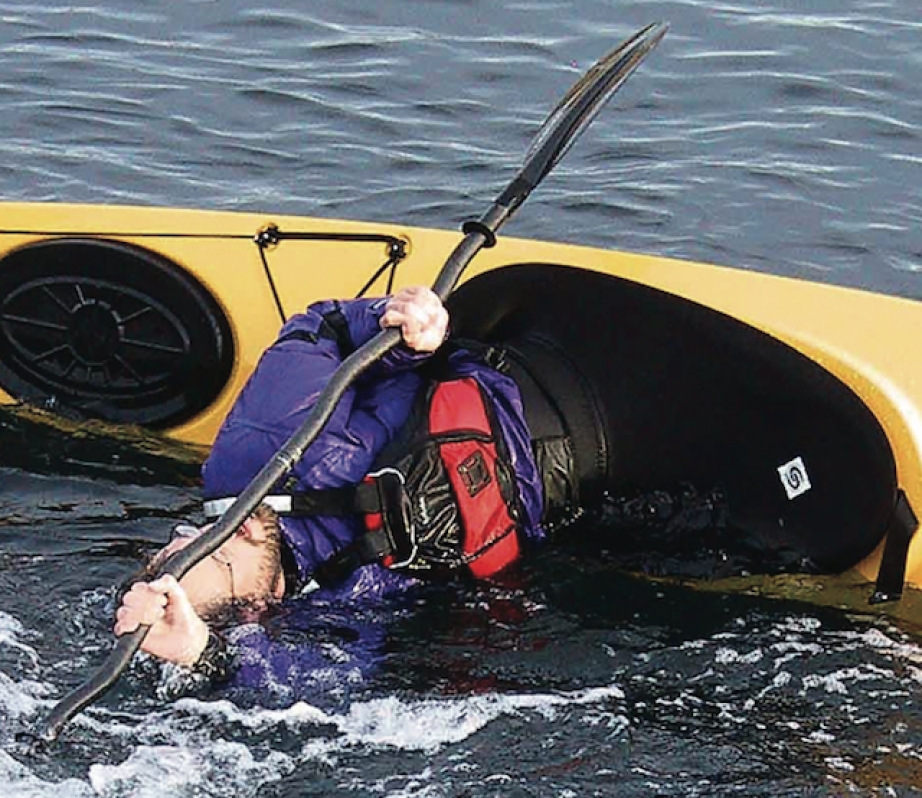Sculling is a good way to maintain your balance in a kayak. A scull generates ongoing support over a far longer period of time than a brace will and therefore allows a greater sense of security when edging a kayak or navigating confused waters.
Sculling is usually practiced with the boat on a modest tilt. An “extreme” scull is a stroke where the paddler literally lies out on the water. While this is seldom used for any practical purpose other than showing off, extreme sculling is fun and a great drill. And, it looks cool!
Sculling Basics (photos 1 & 2)
The Extreme Scull
Mastering the extreme scull will greatly improve your ability to feather a blade in the water and lead to smoother transitions from one stroke to another. You will also gain a good feeling for leading edge lift and blade angle. An extreme scull is a natural springboard to kayak rolling or bomb-proofing your existing roll; it reinforces the correct posture and body mechanics used to finish a roll.
There are several tricks that will make the extreme scull a snap to master.
Photo 3
Lying way back onto the stern deck and committing fully to the extreme scull allows the buoyancy of your torso and PFD to help keep you floating at the surface. This is far easier than trying to scull with your body just above the water. When floating, only a light scull will be necessary to maintain the position.
Point your chest at the sky and stretch and rotate your torso in order to keep the kayak as upright as possible. Think about keeping your inside knee pointing upward to prevent the kayak from overturning.
Photo 4
Keep your outer hand low, while the inner “control hand” does the sweeping motion and sets the all important blade angle. The power face is open, leading edge up, as you sweep the blade forward toward the bow.
{loadposition PTG_AK_Midcontent}
Photo 5
As the blade reaches the end of its arc at the bow, stopping the motion will mean a momentary loss of support. No problem, quickly switch the leading edge and begin sweeping toward the stern. A smooth fluid scull is seamless support.
Photo 6
As the blade is swept back again toward the stern, the power face is closed and the leading edge angled up. This sculling action of opening and closing the power face, sweeping the blade back and forth can be maintained indefinitely.
When finishing the extreme scull and righting the kayak; it’s your body that will do most of the work. As you sweep from the bow toward the stern, drive your inside knee up— completely righting the boat—and draw your ribcage in laterally over the kayak. Leaning well back over your stern deck seems to be the easiest. Be sure it is your head that comes up and over the boat last.
Alex Matthews is an active and committed surf kayaker, whitewater paddler and sea kayaker based on Vancouver Island. He is a regular contributor to Adventure Kayak.
Photos on this page taken by Rochelle Relyea.
